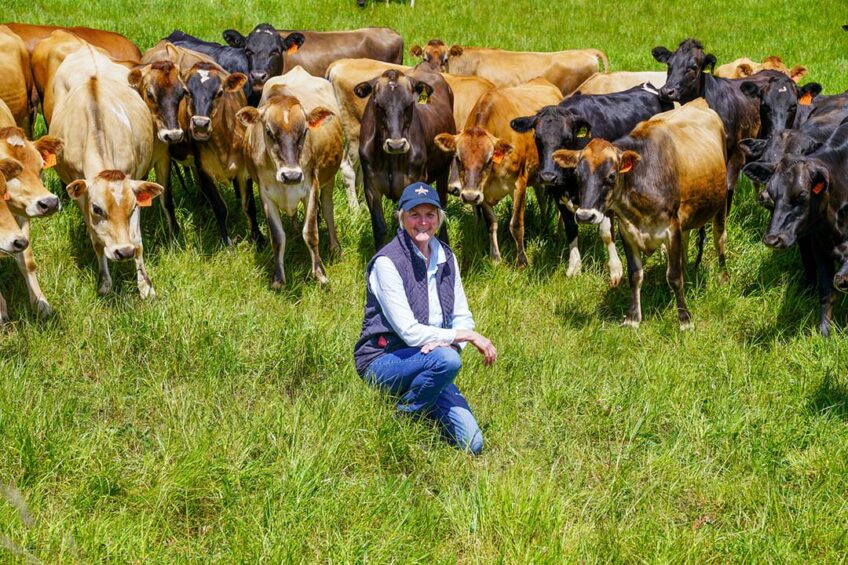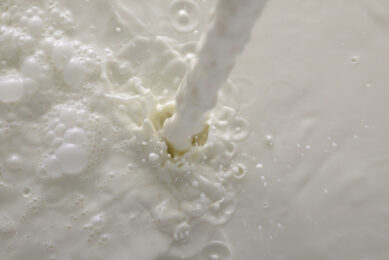Australian investment group on target to reach 10,000 cows

With a goal of amassing 10,000 cows by 2027, an Australian investment group is on target to reach that number having acquired yet another farm in Tasmania.
Currently managing 8,600 cows in Australia, Prime Dairy says it is confident in the future of dairy farming there and hopes to achieve a minimum 12% return for investors. Prime Dairy is the dairy arm of Melbourne-based fund manager Prime Value Asset Management, which also manages equities, income securities, direct property and other alternative investments.
The group has just purchased another 700-hectare dairy farm in Woolnorth, northwest Tasmania, from struggling Van Dairy Group.
Corporate dairy farming
Heading up Prime Dairy is dairy expert Kirsti Keightley, general manager of Dairy Investments, who was first introduced to the group in 2018 when it was looking into starting an agri fund.
Keightley says: “They had no one within the company with any agriculture experience and were keen to add to their alternatives portfolio. I came to Australia in 1996 from New Zealand with a young family to grow our dairy business. At that time land prices were high and we had a small 130-cow farm at home, following years of sharemilking.”
While working in the family business, Keightley developed a passion to show that corporate dairy farming could work. “I had previously carried out some consulting work for a New Zealand company who were looking at expanding their business into Tasmania, so I already knew the opportunities there.”
Water availability for the dairy
Amongst Keightley’s roles is managing a team of 80 staff that work on the investment group’s dairy farms. She is also involved in liaising regularly with investors, who are mainly all from Australia.
“In the beginning I advised Prime Dairy that the criteria for buying farms should include them being located in high rainfall areas, either with irrigation, or the constant availability of water. I wanted areas that could grow as much pasture as possible, and therefore suggested south west Victoria, where I was farming, and north west Tasmania where I had spent a lot of time looking at farms,” says Keightley.
“It’s my responsibility to find the opportunities, negotiate the purchase, and get the farms under contract. I run the management team and office in Tasmania, and liaise with potential investors as well,” she adds.
$250 million investment in dairy farms
To date, Prime Dairy has invested AUS$250 million in 11 dairy farms and 4 support farms, which will be milking 9,000 cows by next season. The goal is to reach 10,000 cows by 2027 on 5,800 hectares. It has production targets of 43.13 million litres in 2024 and is forecasting 45.28 million litres by 2025.
Keightley: “The goal was to get enough land to milk 10,000 cows, and support areas, so that we had control of all of our animals, grow out our youngstock, and winter our own cows. We are closing the fund at the end of June and will be at AUS$250 million, but we could look at running a second fund if we had more interested investors. Our farms range from 500 cows to 1,200 cows with 8 out of the 11 averaging over 800 cows each.”
Keightley adds: “I believe we have put together some of the best dairy land in the world for pasture-based farming. Our goal of 10,000 cows was to give us enough milk to potentially look at manufacturing our own products, if we found the right opportunity.”
Australians quit dairy
With quite a few Australian dairy farmers quitting the industry due to climate issues, such as droughts and floods, poor prices and labour shortages, Prime Dairy says the future of its farms are secure.
Keightley states: “Firstly, 90% of our farms are in Tasmania, which is reported to be the state least affected by climate change with a mild climate, high rainfall and has irrigation water available. We have – and are still setting up – pivot irrigators on all farms to spread our effluent over larger areas and to use the fresh water we have available.”
Since the introduction of the code of conduct for processors and the guaranteed minimum milk price, Keightley says that the number of farmers getting out has slowed. “In fact, dairying in Tassie [Tasmania] has been growing at between 2% and 3% every year when the balance of the country was declining at around 5% or 6%. This season is looking like 1 or 2 of the other states will show an increase in milk production for the first time in years.”
Keightley speaks about labour: “In terms of labour, we have what is called a labour agreement which allows us to bring in migrant workers, who will end up with permanent residence here. We currently have 30 staff from senior operations managers to farm hands with us, on this agreement. We are a very multi-cultured team with staff from around 8 different countries, and 45% of our workforce are female. We employ a fulltime human resources manager and take training and career growth very seriously.”
Dairy production
She says: “Currently 80% of Australian dairy produce is consumed domestically. The growth of our population is higher than the growth in dairy production; therefore, demand will not keep up with supply. This should mean that current prices can be maintained or increased in future.
“I believe there is a group of consumers who want dairy products from free-range pasture-fed cows. They want to know where the milk comes from and what the cows are being fed, and that they have been looked after well. Dairy farming is an exciting and rewarding career and more young people are starting to see this and are being attracted into the industry,” she says.
The latest farm acquisition is the 13th farm Prime Dairy has purchased from VDL, 11 of which were purchased during 2021.
Keightley adds: “Since then, Prime Dairy committed significant capital expenditure which is now delivering strong dairy production. We’re now seeing the rewards from significant investment in the region, which we first commenced in 2020 and ramped up in 2021. Our dairy production is up 35% over the last year, which will improve profits, and we expect significant further growth to come,” she said.
The Prime Value Dairy Trusts targets a minimum 12% return over the medium to long term, including distributions of 5-7% paid quarterly, with returns derived from a combination of regular income from milk sales and land value appreciation.
Join 13,000+ subscribers
Subscribe to our newsletter to stay updated about all the need-to-know content in the dairy sector, two times a week.










